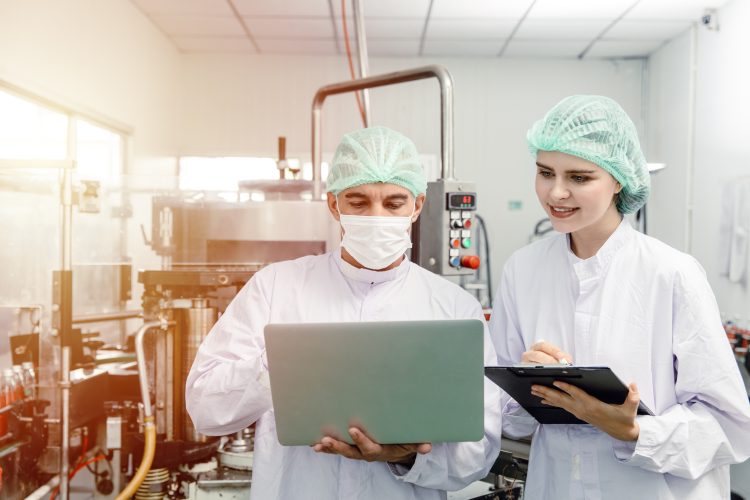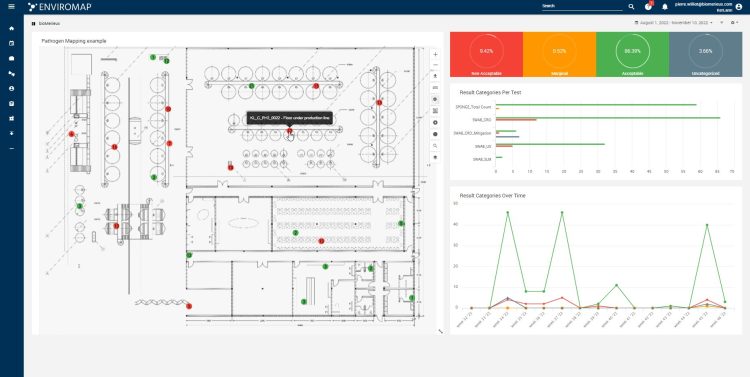Successfully digitalise your environmental monitoring programme
- Like
- Digg
- Del
- Tumblr
- VKontakte
- Buffer
- Love This
- Odnoklassniki
- Meneame
- Blogger
- Amazon
- Yahoo Mail
- Gmail
- AOL
- Newsvine
- HackerNews
- Evernote
- MySpace
- Mail.ru
- Viadeo
- Line
- Comments
- Yummly
- SMS
- Viber
- Telegram
- Subscribe
- Skype
- Facebook Messenger
- Kakao
- LiveJournal
- Yammer
- Edgar
- Fintel
- Mix
- Instapaper
- Copy Link
Posted: 14 November 2023 | bioMérieux | No comments yet
In today’s world of data and digital transformation, the food industry must harness the value from these new tools. It is also important to avoid ‘mistakes’ by making the wrong investments. bioMérieux’s suite of innovative solutions for augmented diagnostics includes the specialisation in digitalising EMP. Here are a few key tips to ensure a successful implementation.


Recent food recalls should serve as a constant reminder of the importance of environmental monitoring programmes (EMP). A robust, well‑thought-out EMP with a strong focus on finding pathogens ‘before they find us’ helps ensure that safe food is produced and protects the brands of food producers. With the explosion of digital solutions and artificial intelligence (AI), food processors now have access to tools that will help them be even more proactive and productive.
The value of digitalisation
While digitalisation is simply converting information into a digital format (think Excel), digitalisation is developing and implementing processes that change workflows and improve existing manual systems. For EMP, digitalisation means completely automating the scheduling and ‘corrective and preventative action’ (CAPA) processes, results mapping, and trend analysis.
Digitalising an EMP brings enormous benefits. Besides time savings through automating processes, one key value is the speed at which actionable information is made available. Personnel are notified immediately if something is out-of-spec, prompting urgent action and simplifying decision making, initiating CAPA or getting to the root cause. Another benefit is the ability to easily dashboard, benchmark different sets of data, see trends earlier, and catch potential problems before it’s too late. Finally, having everything digitalised makes it easier to pull data for auditing, root cause analysis, or just to ensure that the EMP is properly executed.
The promise of predictive analytics
With the explosion of big data analytics, machine learning and AI, the food industry is seen as the next sector to fully embrace these new tools. However, it is important to understand the food industry’s dynamics in order to properly leverage those tools. Two aspects of the food industry make applying big data analytics to food safety and quality challenging. First, even though manufacturers generate tons of data, only out-of-spec results can really be leveraged for analysis. And, generally, out-of-spec data is rare, making a big-data approach difficult. Second, food manufacturing plants are constantly changing environments with myriad interactions and moving pieces, which again makes analytics more challenging as many tools make assumptions based on static sets of data.
To address that challenge, connecting data to expert analysis is paramount in order to draw meaningful and actionable insights from them. For food safety and quality, this means associating data analytics with expertise in food safety and quality, microbiology/chemistry and food processes.


Figure 1: ENVIROMAP®, one of the tools offered by bioMérieux to digitalise your EMP
Tools do not replace behaviours
It is well known that tools only regurgitate whatever input they were fed. At bioMérieux, we believe it is all unoptimised data without a comprehensive, risk-based EM plan, as well as the right people, tools and training to execute it properly. It would be very risky to make critical food safety-related decisions based on the insights provided by a digital tool that was fed poor data.
Before implementing any digital solutions or predictive analytics, it would be wise to analyse your current plans and make the necessary adjustments to be confident that the analytics are based on sound data.
The emergence of digital tools dedicated to EM programmes creates opportunities for food safety and quality leaders to accelerate time-to-decision, be more proactive and have a more robust EM programme. But those are just tools, and it is the expertise, sound strategies and precise execution from bioMérieux, your trusted partner in augmented diagnostics, that make data meaningful and actionable for food producers worldwide.
Trust bioMérieux, your augmented diagnostics partner
In conclusion, successfully digitalising your environmental monitoring programme is not merely a matter of adopting the latest tools and technologies. It involves a holistic transformation of processes, combining data with expertise and adhering to best practices in food safety and quality. The food industry is at the threshold of a digital revolution, and by embracing these changes with prudence, it can reap the benefits of enhanced safety, efficiency and reputation management. As you navigate this digital frontier, remember that the tools are only as good as the foundation on which they stand, and with bioMérieux as your partner, you can confidently lead the way in augmented diagnostics for a safer and more secure food industry.
Learn more here.









